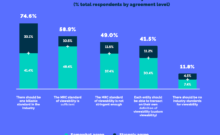4G brought about video streaming, app stores, programmatic auctions and an entry point into the world of virtual reality, augmented reality and artificial intelligence. With 5G, experts say advertisers and publishers should expect much more.
Imagine hopping in an autonomous vehicle and calling up Amazon Alexa to prep for dinner. A holographic display appears on your dashboard and directs you through the steps of a recipe, based on your diet preferences and meal history, as you drive to Whole Foods to pick up the ingredients, which are already being assembled robotically.
That is a (realistic) vision of the future with 5G, according to Scott Singer, managing director at consultancy DDG. Singer and other experts say 5G brings with it the ability to process and exchange more data at higher speeds, so advertisers and publishers can expect to see faster ad-load times on desktop and mobile and more connected devices.
Today, when a visitor to a website clicks a link, there is a slight delay before a server responds, resulting in milliseconds to seconds of nothing apparently happening. It’s an issue that causes visitors to click away from an article or site, and one reason behind the adoption of ad blockers, according to a study by the Interactive Advertising Bureau. But 5G will effectively eliminate that delay, said Jeremy Lockhorn, vp of experience strategy for mobile and emerging technology at agency SapientRazorfish, resulting in faster ad-load times and happier users. The FCC states that 5G is 1,000 times faster than 4G with 100 times less latency. Singer said he wouldn’t be surprised if the use of ad blockers begins to diminish because of webpages loading at quicker speeds.
Read More At The Original Article: digiday.com









